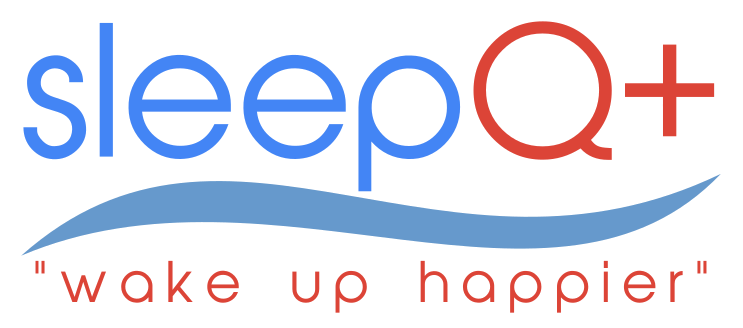March 25, 2017 1 Comment
It’s a common misconception that a child who breathes through their mouth will eventually grow out of the habit or get orthodontic work to rectify the problem. The concerning reality however is that mouth breathing is sign of developmental issues that relate to normal oral, airway and facial growth.
Experts are now uncovering the long-term health issues such as sleep disorders and symptoms relating to ADHD that all relate to improper jaw and breathing patterns in growing children. The number of kids diagnosed for ADHD tests are more than ever and some figures show that 9% are being put on ADHD medication.
Normal breathing patterns.
In normal oral airway development, humans are designed to breath through their nasal passages. Whilst mouth breathing is seen in a growing number of children, the health risks associated with childhood mouth breathing indicates the restoration of nasal breathing as early as possible.
The nasal passages are designed to slow the flow allowing for warming and humidifying of air before travelling to the lungs. Gases are saturated with water vapour by the time they reach the trachea. Mouth breathing provides cold, dry air and as a result the lungs will have difficulty providing maximum oxygenation for the body.
Over the long term it can deprive every cell of the body including the brain and major organs of crucial oxygen.
Childhood teeth development.
The jawbones are designed to house all of the facial structures including the mouth, teeth, airways and associated soft tissues. Normal development of the mouth (straight teeth) means that the nasal airways have also sufficiently developed. The connection between dental function and breathing begin right from birth.
When we swallow, the tongue exerts pressure on the roof of the mouth and widens the palate. People who breathe out of their mouth don’t swallow as often because the mouth tends to be dry, preventing normal growth of the roof of the mouth.
This leads to serious consequences of underdeveloped jawbones that can lead to a long narrow face, narrow mouth and receded jaws. These facial deformities are often corrected with regular braces address the crooked dental arch – however the goal is normally straight teeth, which if not performed early enough, doesn’t always equate to a normally developed face.
Breastfeeding & palate formation.
Breastfeeding is directly related to the development of a baby’s jaw and airway. Evidence has shown that newborns who are breastfed rather than bottle-fed have reduced problems with airway restriction and better dental health later in life, which is linked to the type of sucking done in infancy.
The reason is that breastfeeding plays a crucial role is the swallowing action of the tongue and creating the vacuum that acts to shape a babies palate. A child that bottle-feeds uses a pacifier or has a thumb sucking habit may disrupt the flow of air through the airway and there is risk of developing obstructive sleep apnea.
Mouth breathing and sleep apnea.
Children with crooked teeth and underdeveloped jaws are an extremely common phenomenon in the modern world. A lack of space in the upper and lower jaws leads to dental crowding and overcrowding of the tongue, leading it to fall back and potentially block the airways during sleep and may lead to sleep disordered breathing.
Sleep disordered breathing.
Sleep disordered breathing is connected to the inability of the child to adequately breathe during sleep and is vastly contributed to by other factors that block the nasal passage, like allergic rhinitis or allergies. Inflammation and swelling in the nose will further obstruct breathing during sleep.
Sleep disorders and ADHD.
The US Center for Disease Control and Prevention reports that more than 5 million children aged 3-17 have been diagnosed with attention deficit hyperactivity disorder.
A study that analyzed more than 11 thousand children over 6 years has revealed that children who suffer from sleep disorders, including sleep apnea, were 50 to 90 percent more likely to develop ADHD-like symptoms than normal breathers.
The research is linking kids with sleep disorders and higher incidence of behavioural and emotional issues such as hyperactivity, aggressiveness, depression, and anxiety. Experts have hypothesised that lack of sleep can damage brain neuron development which may link to ADHD.
Another theory says that kids who don’t sleep well are being diagnosed with ADHD like symptoms because they simply haven’t slept enough.
Myofunctional orthodontic treatment.
The restoration of nasal breathing during wake and sleep may be the only valid complete correction of sleep-disordered breathing.
Oro-facial muscle training and re-education of normal oral-nasal functions, alongside orthodontic treatment is a new pathway that can allow a child’s jaw, face and airways to develop they way they are meant to. Daily facial muscle training, including tongue exercises, termed ‘myofunctional therapy’, has been reported to help eliminate abnormal breathing during sleep, including detrimental mouth breathing and should be considered when the diagnosis of crooked teeth or childhood mouth breathing is identified.
By Dr. Steven Lin.
Updated March 25 2017
Comments will be approved before showing up.
March 09, 2025
There is extensive scientific research that supports the link between mouth breathing and sleep disorders.
The nose is nature’s design to deal with air intake. (1) Mouth breathing is linked to reduced exercise capacity (2), snoring, sleep apnea, (3) sleep disorders and attention deficit hyperactive disorder (ADHD) (4) sinus congestion, facial abnormalities (5), allergies, asthma, dental crowding and crooked teeth. (6)
October 21, 2022
July 20, 2022

Clare Moran
January 10, 2019
My 9 year old son is awaiting paediatrician appointment to determine if he is to be diagnosed with ADHD..
He has long suffered with nasal congestion, diagnosed with chronic rhinitis and also is a mouth breather and snores at night.. he has been having allergy symptoms of late too.. reading this has really made me question and want to investigate the ADHD links and will be speaking to he GP ASAP about getting this looked at properly.
Thanks for an informative read.